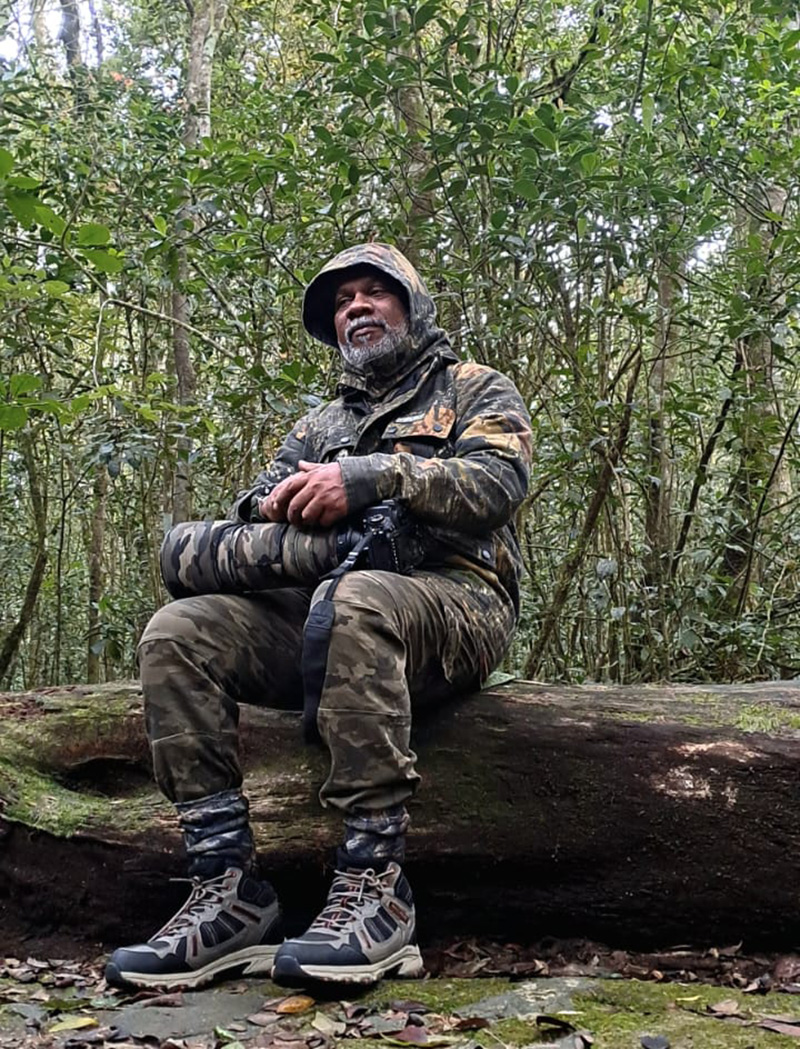Life style
Upali Wijewardene: He reached for the stars

On a day like this 39 years ago on February 13, 1983, Sri Lanka’s much loved business leader, Upali Wijewardene, who captured the imagination of an entire nation vanished without trace in his Lear jet with five others on board. They were returning to Colombo from Malaysia where his Kandos chocolates had hit dizzy heights.
His disappearance engulfed the the region with shock and disbelief. US Orion surveillance aircraft, Soviet and Australian warships, Indonesian minesweepers, Indian airplanes, Malaysian patrol boats and Sri Lankan fishermen were all mobilized in search operations to no avail. ‘What if Upali lived? What really happened to Upali?’ continue to be yet unanswered questions.
If Upali Wijewardene was a sensation in life, he was elevated to a legend after he went missing just four days short of his 45th birthday.
Wild theories about his disappearance were floated around and Colombo’s children of the 80s were said to have devised a game called ‘Finding Upali’s Plane.’ A larger than life figure and a maverick who embraced life with such gusto had disappeared; but he continues to live in the heart of a nation.
The Sunday Island recaps the saga of its founder who was once dubbed ‘the ‘Quintessential Entrepreneur of Asia’ and ‘the man who would be President’
By Randima Attygalle
“My philosophy is to do what you know how to do well and from this I mean you must have the knowledge right all the way through…” reflected Philip Upali Wijewardene, or ‘PUW” as he was fondly called, in an interview with the Malaysian Business in December, 1981. In a technologically austere time, long before the digital revolution when a direct international call had to be ‘booked.’ Wijewardene plunged into chocolate-making, assembly of cars, newspaper publishing, aviation, plantations and much more. As was once documented, ‘the success story of Upali, is the story of how small Asian companies can grow into multinational corporations. It was a precursor of the coming of age of the ‘entrepreneurial Asian.’
 Philip Upali Wijewardene was born on February 17, 1938 to Don Walter Wijewardene (from Sedawatta walauwa ) and Anula Kalyanawathi Wijesinghe (from Miriswatta Walauwa) at his famous paternal grandmother Helena Wijewardene’s mansion, Sri Ramya, in Colombo (where the present American Centre stands). Upali grew up amidst the affection of his two older sisters, Anoja and Kalyani and a bevy of cousins. He received his kindergarten education at Ladies’ College and later at Royal College, Colombo. When he turned 15, Upali was sent off to St. John’s School Leatherhead in England. Having read Economics at the University of Cambridge, the 21-year-old debonair Wijewardene returned home in 1959 and was recruited by Lever Brothers as a Management Trainee. The corporate rigours and an eternally irate boss left the young recruit drained in two years.
Philip Upali Wijewardene was born on February 17, 1938 to Don Walter Wijewardene (from Sedawatta walauwa ) and Anula Kalyanawathi Wijesinghe (from Miriswatta Walauwa) at his famous paternal grandmother Helena Wijewardene’s mansion, Sri Ramya, in Colombo (where the present American Centre stands). Upali grew up amidst the affection of his two older sisters, Anoja and Kalyani and a bevy of cousins. He received his kindergarten education at Ladies’ College and later at Royal College, Colombo. When he turned 15, Upali was sent off to St. John’s School Leatherhead in England. Having read Economics at the University of Cambridge, the 21-year-old debonair Wijewardene returned home in 1959 and was recruited by Lever Brothers as a Management Trainee. The corporate rigours and an eternally irate boss left the young recruit drained in two years.
Having quit Levers in 1961, the blue-blooded Wijewardene did not fall back on his family wealth but sought his own fortune first with a friend’s ailing confectionery plant which he re-baptized as Delta and a few years later with Kandos – the brand promoted by Ceylon Chocolates Ltd. In 1970, with the demise of its founder Chairman, Senator Sarath Wijesinghe, his nephew Upali Wijewardene who was expanding his business empire took over the reins of that company.
True to Wijewardene’s philosophy: ‘plunge in and get on with it’, the expanding fully-fledged cocoa processing plants and factories in Malaysia, Singapore and Thailand enabled Kandos to be internationally present and rub shoulders with Nabisco, Mars, Cadbury and Hershey’s. At the time of his disappearance, Wijewardene claimed to be the only fully-integrated cocoa processor in Asia, with businesses ranging from growing cocoa to manufacturing cocoa-based consumer products. The cocoa tree which still adorns the Upali Group’s head office in Colombo and the taller tree which once stood at the door to his luxurious home in Pantai Hills in Kuala Lumpur, which he aptly named ‘Cocoa Hill’, says it all.
Following his uncle D.R. Wijewardene, the press baron, he went on to launch The Island and Divaina snubbing feasibility studies of foreign experts who warned him that the national newspaper market was already saturated. The exercise, as he alluded to the Insight magazine in May, 1981 five months ahead of its launch, was one of his ‘fun-projects’ but analysts say that political ambitions down the road were part of the story.
Just two months following the success of the newspaper, in an interview with a Malaysian business journal, Wijewardene gleefully remarked: “it must be a world record of some sort.” He went onto note that the newspaper’s popularity probably has more to do with editorial policy and style, adding tongue-in-cheek: “they said there was no market, but people must have got tired of reading gazettes!” As the founder editor of the Island, Vijitha Yapa once recalled, Wijewardene was “an editor’s ideal publisher who never interfered with the independence of the newspaper.”
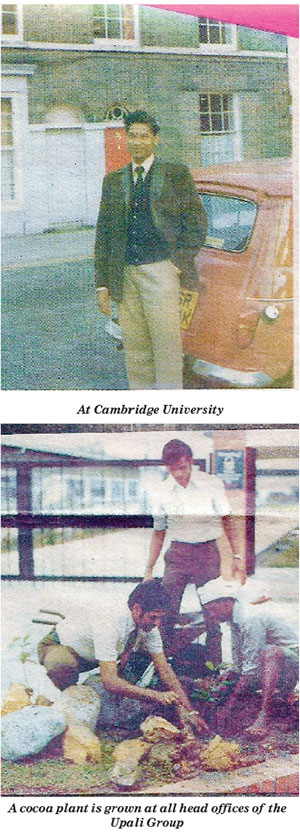 The present Managing Director and CEO of the Upali Group of Companies, Nimal Welgama recollects: “Upali was a man with tremendous energy which he employed in everything he did. He was mischievous, had a sense of fun and in the last lap of his life, not only gave of himself to his many private enterprises but also contributed his time and skill for public purposes; hence his period as Chairman and Director General of the Greater Colombo Economic Commission (GCEC), the predecessor of the Board of Investment (BOI).”
The present Managing Director and CEO of the Upali Group of Companies, Nimal Welgama recollects: “Upali was a man with tremendous energy which he employed in everything he did. He was mischievous, had a sense of fun and in the last lap of his life, not only gave of himself to his many private enterprises but also contributed his time and skill for public purposes; hence his period as Chairman and Director General of the Greater Colombo Economic Commission (GCEC), the predecessor of the Board of Investment (BOI).”
Having worked for the Upali Group as a young man, Welgama recounts his one-time boss ‘making waves in his own inimitable style.’ “He was ever conscious that his father died young and he did not expect to attain a venerable old age. At the time his life was so tragically snuffed out, he used to say that the accent is on enjoying”.
The emblem of the business group he set up – the blazing copper sun with a ‘U’ in the middle was a motif of Wijewardene’s own personality says the Upali Group’s CEO. “The warmth of his personality, like that of the sun, was felt by the many people he befriended. He was good to his employees, people who served him at various levels, and in return had not only their loyalty but their affection.”
From steering a multinational to being the Chief Basnayake Nilame of the Kelani Raja Maha Vihara, Wijewardene donned many hats. His string of thoroughbreds and Labradors stole a large part of his heart. His beloved ‘Charlie’ is said to have kept a long vigil for months after he disappeared, waiting for his master who never returned.
“My late uncle Upali’s signature facet was his love for speed. This he applied in expanding his business empire. He bought a Lear jet and obtained a Red Passport as the Chairman of GCEC because he was a man for speed and a fast decision-maker. Even his other indulgences including his love for horse and car racing reflected this,” recollects nephew, Dhammika Attygalle who was 18 at the time of his uncle’s disappearance and is now a Director of the Upali Group of Companies.
Sporting his ‘Red and Gold Cross Slash’, Wijewardene’s Rasa Penang, Varron, Kandos-Man, General Atty, King of Zulu and Cornwall Garden shone at Royal Ascot, Singapore Derby and Perak Derby, ridden by none other than Lester Piggot. “One time Chairman of the Board of Stewards of the Sri Lanka Turf Club, he would even do a tarmac transfer to his helicopter and would make it to Nuwara Eliya, sometimes just minutes before races were to start.
The luxury S-Class Mercedes Benz 116 which he imported from Malaysia was the first of its kind in Sri Lanka. Upali mama used to travel to Nuwara Eliya or Kamburupitiya (his maternal home town) after dinner to save time and to reach the destination fast,” recollects Attygalle who goes on to note that his late uncle initiated Ruhunu Udanaya Movement to develop his maternal home town Kamburupitiya from where he had ambitions of being elected to Parliament..
A fan of Victor Ratnayake, C.T.Fernando and Milton Perera, Wijewardene would also enjoy the country-western timbre of Jim Reeves, who as he had once conceded, ‘puts him in a pensive mood for thinking up new business schemes.’
Having built a global corporation which spanned several countries including Malaysia, Singapore and the USA in the 1970s and the early 80s in an era of snail mail, telegrams and pre-booked international calls when communicating with people abroad took weeks and travel overseas was expensive and a luxury, her late uncle’s confidence and ‘can do’ attitude inspired her, says niece Lakmini Wijesundera, Co-founder and CEO of IronOne Technologies and BoardPAC. “Today, we have instant communication access and the speed of business is fast-tracked. Asia and the South East Asian regions have comparably good infrastructure to perform. Therefore, the great strides and speed at which he operated despite the obstacles in a technologically-Spartan era is outstanding and stands out among the rest even by today’s standards,” says Wijesundera, a successful entrepreneur herself.
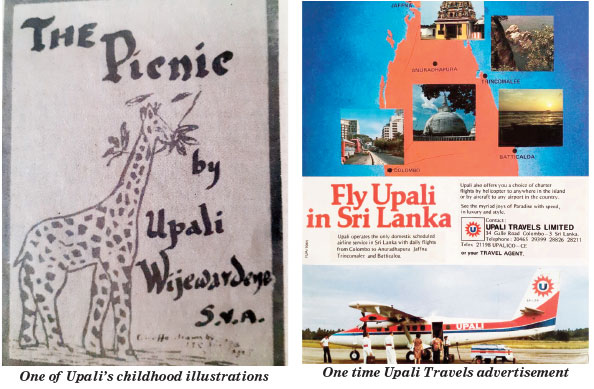
She further remarks that her uncle had his sights up high and was not discouraged by past benchmarks. Therefore, he was able to carve new paths and futures and created an impact in the minds and hearts of Lankans whom he inspired to ‘dream big.’ He hammered home the message that we didn’t necessarily have to be conservative in what we wished to attain.
“His focus on branding was unmatched,” reflects Wijesundera who points out that the Free Trade Zones and concepts of similar nature were supported and led by him to create a fresh economic future for Sri Lanka – models which were innovative then and sucessfully adopted by several other countries in the region.
Watching her Upali mama’s helicopter landing on the flat roof of his Thurstan Road residence was an unforgettable memory for young Lakmini and her siblings. “We were so excited to be part of this rare experience at that time,” she smiles adding that she recalls him to be full of life with a great sense of humour and always with a smile. Thirteen years old at the time her uncle vanished, Wijesundera who relished her mother’s stories about her brother ‘starting from scratch with great determination at a young age.’ She believes that her Upali mama personified the belief that anything is possible with the correct mindset- a mantra that she believes in today.
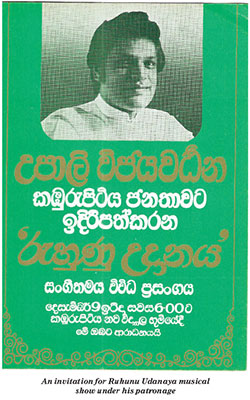
A man who would think big, Wijewardene would advance from Upali Fiat and UMC Mazda to ‘Upali Aviation’. – the only domestic flight which would bridge the North and the South. The halting of the operations of the Upali Airline was a double whammy to fellow Jaffna countrymen who not only saw the flight as a vehicle of better communication between Jaffna and Colombo but also its founder as a harbinger of hope who would have possibly bridged the economic disparity between North and South.
Describing Wijewardene as ‘Sri Lanka’s most colourful businessman who has made a fortune both at home and abroad’, Matt Miller in his article under the banner ‘The man who would be President’ documents in May, 1981, ‘now he is turning his abundant energies and resources to a new arena; politics.’ Noting that ‘Upali’s current passion for politics is matched only by his passion for racehorses,’ Miller goes onto write: “And now the 43-year-old commodities wizard has started what could be called Upali’s Third 20-Year-Plan: ‘The first 20 years were education,” he says, “the second business and the third politics.” He would “be willing”, he says with uncharacteristic restraint to become president of Sri Lanka someday.”
With his suave personality and witty repartee, Wijewardene was a darling of the press. Adorning cover pages of coveted international business journals, he still remains the only home-grown Sri Lankan entrepreneur owning a multi-national to have been featured in the prestigious Fortune magazine.
The present Editor of the Sunday Times, Sinha Ratnatunga, then a young journalist who was one of the close acquaintances of Wijewardene privy to the last moments of the tycoon recollects: “When Upali left for the airport around 6.30 p.m. that day, I left at the same time for Ana Seneviratne’s residence. He was then the High Commissioner for Sri Lanka in Kuala Lumpur. I was to stay there until I flew to join my father who was in Jakarta.
The High Commissioner was getting calls well past midnight and it was only in the morning I heard that Upali’s plane hadn’t arrived in Colombo. I was not particularly taken aback or overly concerned straightaway thinking it was typical of him to go off the beaten track as Upali could be so unconventional even in his planes. It was only by midday while at Genting Highlands watching the cable cars going about that I got that eerie feeling that the plane must be missing.”
As veteran journalist Ajith Samaranayake once commented, “politicians Sri Lanka had known before (included) poets, pundits, scholars, sportsmen, film stars and singers alike. Philip Upali Wijewardene, however, did not belong to any of these moulds. He was not moulded out of the common clay. He broke the mould and reshaped it closer to his heart’s desire.” In Wijewardene’s own words his image in the villages is of “an international businessman of whom they are proud… The villager identifies only with success and for the youth I am probably the culmination of their aspirations.”
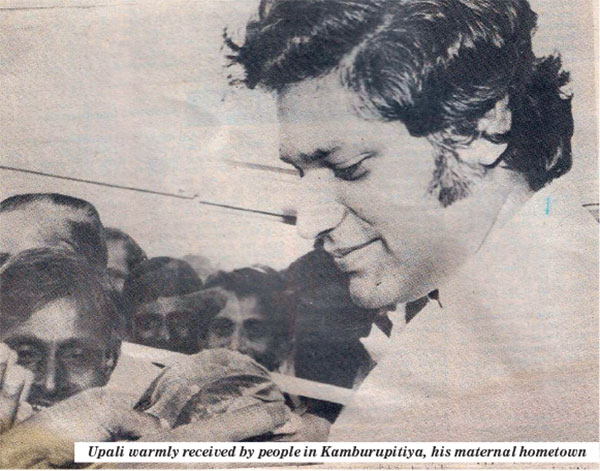
On a personal note, although I was merely a child at the time of Mr. Wijewardene’s untimely demise, I was fortunate to have become a part of the legacy he left behind for Sri Lankan journalism. While Kandos chocolates, Delta toffees, his landmark home in Colombo and the resplendent Nuwara Eliya bungalow and its garden- (which often clinched the ‘Best Garden’ award during the April season) and his Lear jet were motifs I often associated with him as a young child, becoming part of his newspaper allowed me a vantage point to this towering personality.
One of my favourite research subjects, I often hear anecdotes about this trendsetter by my senior colleagues. My editor Manik de Silva who was Mr. Wijewardene’s first choice to edit The Island (which he has recounted under the title The job I didn’t take) has many stories I have savoured – particularly the one about the young Upali knowing he had got the Lever Brothers management trainee job when the sudda boss took him and his rival to the Galle Face Hotel to lunch to check out their table manners. “When my rival titled his soup bowl towards himself and not the other way, I knew I had the job,” Upali had said,

My other colleagues Zanita Careem and Anneston Weerasinghe who were recruited by Mr. Wijewardene more than 40 years ago remember him as a man of infectious charisma who would turn heads not just once but twice.
I’m only humbled to have clinched the award given in his name (Upali Wijewardene Feature Writer of the Year) multiple times – twice from a newspaper he founded. I’m indeed fortunate to have become part of the publication he founded 40 years ago as a platform for liberal expression without fear or favour.
Each time I hear the rustle of the wind blowing through the cocoa tree he planted in the Upali compound, and look at the splendid dome of St. Lucia’s Cathedral nearby towering overhead, I remember Elton John’s Candle in the wind he sang for Marylin Monroe.:
‘And I would have liked to have known you
But I was just a kid
Your candle burned out long before
Your legend ever did….’
Life style
What I Do, What I Love: A Life Shaped by Art, Wilderness and Truth

In a country where creative pursuits are often treated as indulgences rather than vocations, Saman Halloluwa’s journey stands apart — carved patiently through brushstrokes, framed through a camera lens, and articulated through the written word. Painter, wildlife and nature photographer, and independent environmental journalist, Halloluwa inhabits a rare space where art, ecology and social responsibility converge.
His relationship with art began not in galleries or exhibitions, but in a classroom. From his school days, drawing was not simply a subject but an instinct — a language through which he learned to observe, interpret and respond to the world around him. Under the guidance of two dedicated mentors, Ariyaratne Guru Mahathaya and Gunathilaka Guru Mahathaya, he honed both skill and discipline. Those early lessons laid the foundation for a lifelong engagement with visual storytelling.

“His work navigates between traditional Sinhala artistic sensibilities, abstract compositions and expansive landscapes.”
 That commitment eventually materialised in two solo art exhibitions. The first, held in 2012, marked his formal entry into Sri Lanka’s art scene. The second, staged in Colombo in 2024, was a more mature statement — both in content and confidence. Featuring nearly fifty paintings, the exhibition drew an encouraging public response and reaffirmed his place as an artist with a distinct visual voice.
That commitment eventually materialised in two solo art exhibitions. The first, held in 2012, marked his formal entry into Sri Lanka’s art scene. The second, staged in Colombo in 2024, was a more mature statement — both in content and confidence. Featuring nearly fifty paintings, the exhibition drew an encouraging public response and reaffirmed his place as an artist with a distinct visual voice.
His work navigates between traditional Sinhala artistic sensibilities, abstract compositions and expansive landscapes. There is restraint in his use of form and colour, and an underlying dialogue between memory and space. Yet, despite positive reception, Halloluwa speaks candidly about the structural challenges faced by artists in Sri Lanka. Recognition remains limited; fair valuation even rarer.
“This is not merely an artistic issue,” he observes. “It is a social and economic problem.”
In Sri Lanka, art is often viewed through the lens of affordability rather than artistic merit. Many approach a painting by first calculating the contents of their wallet, not the value of the idea or labour behind it. In contrast, he notes, art in Europe and many other regions is treated as cultural capital — an investment in identity, history and thought. Until this mindset shifts, local artists will continue to struggle for sustainability.
The decisive push toward wildlife photography came from Professor Pujitha Wickramasinghe, a close friend who recognised both Halloluwa’s observational skills and his affinity with nature. From there, the journey deepened under the mentorship of senior wildlife photographer Ravindra Siriwardena.
Both mentors, he insists, deserve acknowledgment not merely as teachers but as ethical compasses. In a field increasingly driven by competition and spectacle, such grounding is invaluable.
Wildlife photography, Halloluwa argues, is among the most demanding visual disciplines. It cannot be improvised or rushed. “This is an art that demands restraint,” he says.
Among all subjects, elephants hold a special place in his work. Photographing elephants is not merely about proximity or scale, but about understanding behaviour. Observing social patterns, movement, mood and interaction transforms elephant photography into a constantly evolving challenge. It is precisely this complexity that draws him repeatedly to them.
Halloluwa is cautiously optimistic about the current surge of interest in wildlife photography among Sri Lankan youth. Opportunities have expanded, with local and international competitions, exhibitions and platforms becoming more accessible. However, he issues a clear warning: passion alone is not enough
Sri Lanka, he believes, is uniquely positioned in the global nature photography landscape. Few countries offer such concentrated biodiversity within a compact geographical area. This privilege, however, carries responsibility. Nature photography should not merely aestheticise wildlife, but foster respect, aware ness and conservation.
Parallel to his visual work runs another equally significant pursuit — environmental journalism. For the past seven to eight years, Halloluwa has worked as an independent environmental journalist, giving voice to ecological issues often sidelined in mainstream discourse. His entry into the field was guided by Thusara Gunaratne, whose encouragement he acknowledges with gratitude.
An old boy of D.S. Senanayake College, Colombo, Halloluwa holds a Diploma in Writing and Journalism from the University of Sri Jayewardenepura and has completed journalism studies at the Sri Lanka Press Institute. He is currently pursuing an Advanced Certificate in Wildlife Management and Conservation at the Open University of Sri Lanka — a testament to his belief that learning must remain continuous, especially in a rapidly changing ecological landscape.
Outside his professional life, he enjoys cricket, rugby and badminton. Yet even leisure intersects with responsibility. He is a founding member and former president of the D.S. Senanayake College Old Boys’ Wildlife Forum, an active member of Wild Tuskers Sri Lanka, and a contributor to several independent environmental and wildlife volunteer organisations. In an era dominated by speed, spectacle and short attention spans, Saman Halloluwa’s journey unfolds differently. It is deliberate, reflective and rooted in values. Through art, he captures memory and form. Through photography, he frames life beyond human control. Through journalism, he asks uncomfortable but necessary questions.
“What I do, what I love” is not fashion here.
It is conviction — patiently lived, quietly asserted, and urgently needed in a country still learning how to value its artists, its environment and its truth.
By Ifham Nizam ✍️
Life style
Shaping the future of style

Ramani Fernando Sunsilk Hair and Beauty Academy
Ramani Fernando Sunsilk Hair and Beauty Academy marked their graduation of their latest cohort of aspiring hair professionals in a ceremony held at Kingsbury Hotel.
For over two decades, the Ramani Fernando Sunsilk Hair and Beauty Academy has stood as a beacon of excellence in beauty education in Sri Lanka. Founded by industry icon Ramani Fernando, the Academy has built a reputation for producing highly skilled professionals who go on to make their mark in salons, both locally and internationally. As the newly minted graduates step out into the world, they carry forward not just certificates, but also the promise of creative authority and personal empowerment.
The chief guest for the occasion was Rosy Senanayake, a long-standing supporter of the Academy’s mission. Addressing the graduates her message echoed her enduring belief that the beauty industry is not merely about aesthetic but about. confidence, self-worth and future leaders.
Over months of rigorous training, these young professionals honed their skills in cutting colouring, styling and contemporary artistry readying themselves to set trends rather than follow them.
Each graduate walked the stage with confidence, their dedication signalling a promising future for Sri Lanka’s beauty and fashion industry! With this new generation of stylists preparing to raise the standard of professional hairstyling.
Ramani Fernando, addressing the audience reflected on the academy’s mission to cultivate not only skills but vision and confidence in every student.
She urged the graduates to embrace continuous learning to take risks with creativity .The world of beauty is ever evolving, stay curious, stay bold and never underestimate the power of your talent, she added emphasising the importance of confidence, discipline and passion in carving a successful career in shaping the future of style.
These graduates are stepping into a world of endless possibilities. They are future of the country, who will carry a forward legacy of creativity. Behind every successful graduate at Sun silk Hair Academy stands a team dedicated to excellence. While Ramani Fernando serves as a visionary Principal and it is Lucky Lenagala, her trusted person who ensures that the academy runs seemingly.
From overseeing training sessions to guiding students, through hands on practice, Lucky plays a pivotal role in shaping the next generation of hairstylists.
Kumara de Silva, who has been the official compere Ramani’s, Hair graduation ceremony, from inception has brought energy, poise and professionalism. The Sunsilk Hair Academy is a celebration of talent and mentor ship for the graduates stepping confidentially into the next chapter of their careers, ready to make their mark on Sri Lanka beauty landscape
Pix by Thushara Attapathu
By Zanita Careem ✍️
Life style
Capturing the spirit of Christmas

During this season, Romesh Atapattu’s Capello Salon buzzes with a unique energy – a blend of festive excitement and elegance. Clients arrive with visions of holiday parties, office soirees, seeking looks that capture both glamour and individuality. The salon itself mirrors this celebrity mood. Warm lights, tasteful festive décor create an atmosphere where beauty and confidence flourish.
Romesh Atapattu himself curates the festive décor, infusing the space with his signature sense of style. His personal eye ensures that the décor complements the salon’s modern interiors.
As Colombo slips effortlessly into its most glamorous time of year, the Christmas season brings with it more than twinkling lights and celebrity soirees – it signals a transformation season at salons across the city. Capello salons are no exception.
At the heart of this festive beauty movement is Romesh Atapattu of Capello salons, a name synonymous with refined hair artistry, modern elegance and personalised style.
Christmas is about confidence and celebration. Romesh believes ‘People want to look their best without losing who they are”. Our role is to enhance, not overpower. This philosophy is evident in the salon’s seasonal approach.
Beyond trends, what sets Atapattu apart is the attention to individuality. Each consultation is treated as a creative collaboration – face shape, lifestyle, hair texture and personal style all play a role in creating the best for Romesh.
Stepping into Romesh’s salon during the Christmas season is an experience in itself. The space hums with festive energy while maintaining an atmosphere of calm sophistication.
The décor embraces the Christmas spirit with understated elegance. Tastefully adorned décor, beautiful Xmas tree, soft gold and ivory tones, and gentle hints of red are woven seamlessly into the salon’s contemporary design.
His staff, known for their warmth and professionalism also plays a key role in shaping the salon’s atmosphere—friendly, stylish and always welcoming. The Capello staff combine skill and creativity to deliver results that have a lasting impression.
Beyond trends, what sets Romesh Atapattu apart is the attention to individuality. Each consultation is treated as a creative collaboration – face shape, lifestyle, hair texture and personal style all play a role.
He is a professional who blends technical mastery with a deeply personal approach to style. His dedicated team of skilled professionals, operate with quiet confidence ensuring styles that create an atmosphere of trust, turning every appointment into a personalised and memorable experience.
(ZC) ✍️
Pic by Rohan Herath
-
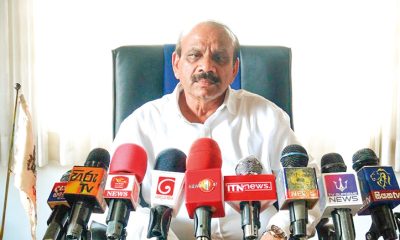
 News6 days ago
News6 days agoStreet vendors banned from Kandy City
-

 Sports3 days ago
Sports3 days agoGurusinha’s Boxing Day hundred celebrated in Melbourne
-

 News6 days ago
News6 days agoLankan aircrew fly daring UN Medevac in hostile conditions in Africa
-
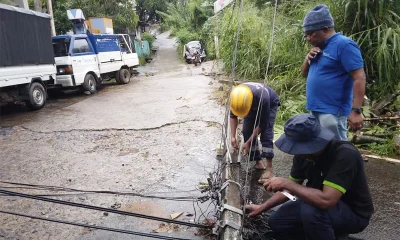
 News1 day ago
News1 day agoLeading the Nation’s Connectivity Recovery Amid Unprecedented Challenges
-

 Sports4 days ago
Sports4 days agoTime to close the Dickwella chapter
-

 Features6 days ago
Features6 days agoRethinking post-disaster urban planning: Lessons from Peradeniya
-

 Features2 days ago
Features2 days agoIt’s all over for Maxi Rozairo
-

 Opinion6 days ago
Opinion6 days agoAre we reading the sky wrong?


